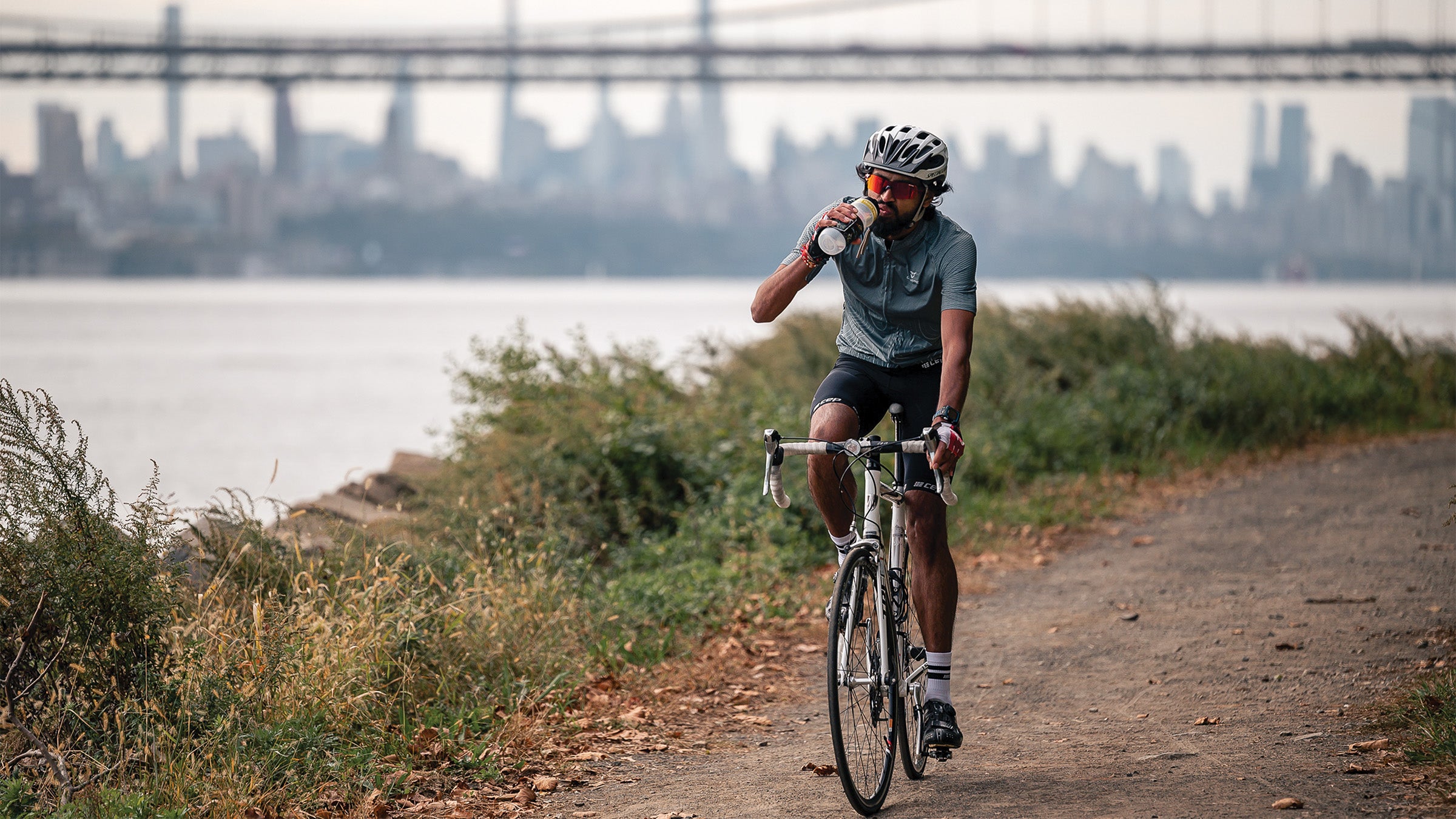Ask Stacy: Should I Skip Solid Foods on Race Day?

(Photo: Johnny Zhang)
I’ve heard you advocate for athletes to take on calories from food and hydration from fluids. Why? And what does that mean?
When it comes to advising athletes on how best to take on race fuel and hydration, I’m well known for the phrase: “Food in the pocket, hydration in the bottle.” By this, we mean take on your calories from food (don’t drink them) and stay hydrated via fluids in your bottles.
As liquid calories (sports drinks, gels, added carbohydrates to sports drinks) are one of the preferred sources of calorie-dense and easy-to-carry fuel, it’s worth examining why I believe these to be detrimental fuel sources for performance.
When it comes to a standard gel, the calorie content ranges from 100 to 120 calories per serving (33–40g of carbs)—typically composed of maltodextrin and fructose, with a bit of sodium, potassium, flavorings and preservatives. Most usage directions state that a gel must be consumed with 2–4 ounces of water. If we look at typical “carb fuel” (e.g., energy bars) the calorie content is about 200 calories per serving with 50g of carbohydrate, so here’s where things start to get tricky when it comes to gels.
In basic terms, a gel is a concentrated carbohydrate, usually a 70% solution (approximately 70g of carbs per 100ml). Often the manufacturers recommend chasing the gel with water or alternating the carb-rich drink with plain water to effectively reduce the overall concentration of the carbohydrate hitting the stomach and intestines in one go. Why? The carbohydrate concentration and the osmolality (the concentration of dissolved particles in the solution) affect gastric emptying: the higher the osmolality, the slower the gastric emptying; the higher the carbohydrate concentration (even mixed sugars), the slower the gastric emptying. By the nature of the concentration, high carbohydrate liquids will sit in the stomach and increase the osmotic pressure, drawing water into the stomach to effectively dilute this pressure and allow the solution to exit into the small intestines. This is where we start to see dehydration.
RELATED: Training Your Gut to Absorb More Carbs
The second factor is the carbohydrate matrix of the solution. Research shows that the combination of two sugars is much faster than one for promoting carbohydrate absorption. But the actual absorption rate of the sugars is the contention here: Glucose is absorbed from the intestine into the plasma via more than one active glucose co-transporter protein, reducing the contact time with the gut. Fructose, however, is less efficient and slower to be absorbed due to less active transport mechanisms, leading to increased contact time with the gut. Why is contact time significant? With incomplete and slow absorption, there are more fructose particles than water, causing an increased pressure, signaling fluid to be drawn into the intestines, producing those feelings of bloating, gas, diarrhea, and general GI (gastrointestinal) discomfort—and another cause of dehydration.
Some studies show as many as 45–50% of endurance athletes struggle with some form of GI distress in races. Balancing successful fueling and hydration with these potential GI problems is one of the biggest challenges for triathletes. While the symptoms can have more than one cause, why run the risk of increasing those odds?
When exercise is intense or when dehydration causes hypovolemia (decreased blood volume), it induces changes in blood flow by shunting blood from the gut to the working muscles. This effectively causes hypoxia (low oxygen) to the GI tract and increases neural activity of the submucosa of the gut (the connective tissue). This change to the GI tract increases the secretion of certain hormones and decreases absorption through the intestinal cells. This combination induces diarrhea, intestinal cramping, and delayed gastric emptying. Anxiety also tends to induce lower GI issues, and there tends to be a sex difference in symptoms as well—women are five times more likely to experience diarrhea and intestinal cramping than men; men tend to have greater risks of vomiting and nausea.
RELATED: How to Get Through an Ironman Without Sh*tting Yourself
When it comes to race fueling, separating calories from hydration will help alleviate these potential GI roadblocks and give you more flexibility. First, because concentrated carbohydrate ingested into a compromised gut causes water to be pulled into the stomach. Second, as the intensity and/or duration of your activity increases you will need to change your fluid intake—and the same can be said for environmental considerations (if it is hot, you will need more hydration). But your fuel needs may not change as drastically as your hydration needs. By keeping your hydration separate from your calories, it gives you more variety in your fuel choices and the ability to plan your fuel according to your workload, environmental conditions, and terrain.
RELATED: We Taste-Tested 19 of 2022’s Best (And Weirdest) Drinks, Gels, and Chews